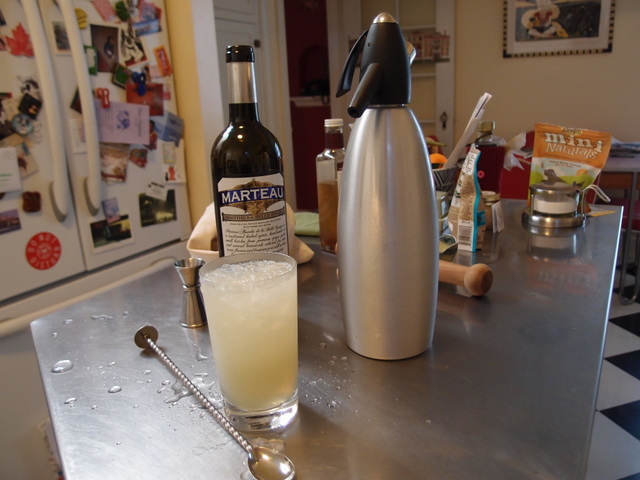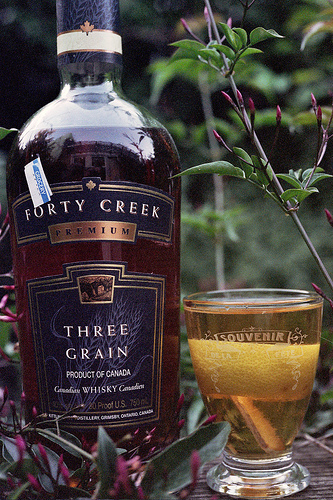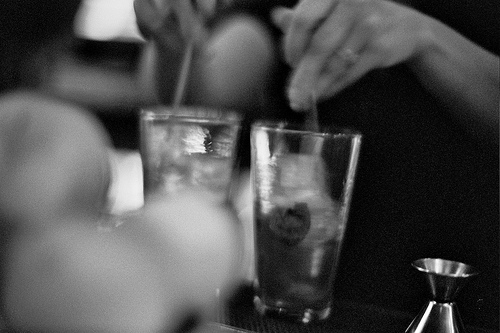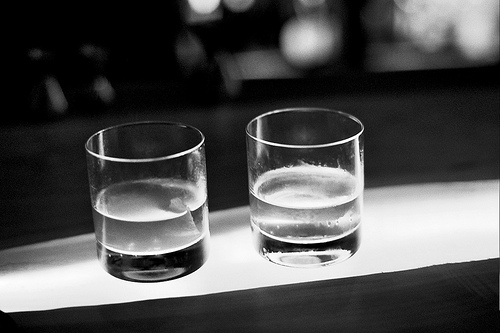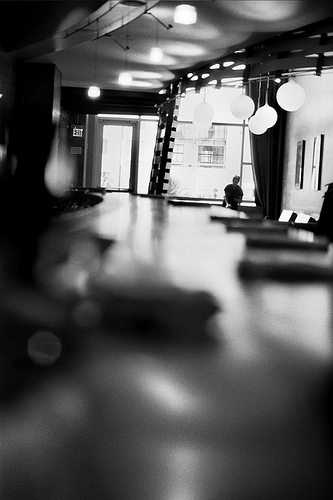Frappe.
Absinthe Frappe
2/3 Absinthe,
1/6 Syrup of Anisette, double quantity of water.
Shake up long enough until the outside of the shaker is thoroughly covered with ice. Strain into a small tumbler.
The Absinthe Frappe is basically a soda fountain style presentation for what is essentially an Absinthe Cobbler or Julep. It is NOT a drink for people who dislike Anise or Absinthe. On the other hand, if you like Absinthe, it is a pleasantly refreshing and cooling change of pace from the plain old Absinthe drip.
In “Famous New Orleans Drinks and How to Mix Them” Stanley Clisby Arthur has one of my favorite text pieces with instructions and commentary on the Absinthe Frappe.
Absinthe Frappe
1 jigger Absinthe substitute
1 teaspoon sugar sirop
1 jigger charged water.Fill a small highball glass with cracked or shaved ice. Pour in the sugar sirop, then the absinthe substitute, and drip water (seltzer or other charged water will improve it) slowly while frapeing with the spoon. Continue jiggling the barspoon until the glass becomes well frosted.
This is the simple and easy way to prepare an absinthe drink, one that has many devotees in many lands. Of course, if you have a shiny cocktail shaker and want to put it to work, you can use it. Shake until the shaker takes on a good coating of frost, and then pour the mixture into glasses which have been well iced before the drink is prepared.
Of course this also requires me to quote Clisby Arthur on “jiggling”:
Jiggling is not “stirring”. Stirring calls for a rotary motion, but “jiggling” is dashing the spoon up and down steadily until the outside of the goblet is frosted. Place the metal or glass container on a table to do your jiggling–do not hold the glass for heat of the hand will hinder frost from forming on the outside.
I like to use the disk end of European-style barspoons, usually intended for layering pousse cafe, when “jiggling”. I will also increase the amount of sweetener from Clisby Arthur, as I am not using a pre-sweetened “Absinthe Substitute” like Herbsaint, Pernod, or Ricard.
Absinthe Frappe.
1 1/2 oz Marteau Absinthe de la Belle Epoque;
1/4 oz Small Hand Foods Gum Syrup;
Soda Water;
Fill a small highball glass with cracked or shaved ice. Pour in the Absinthe, then the Gum Syrup, and soda water slowly into the glass while frapeing with the spoon. Continue jiggling the barspoon until the glass becomes well frosted.
This post is one in a series documenting my ongoing effort to make all of the drinks in the Savoy Cocktail Book, starting at the first, Abbey, and ending at the last, the, uh, Sauterne Cup.
